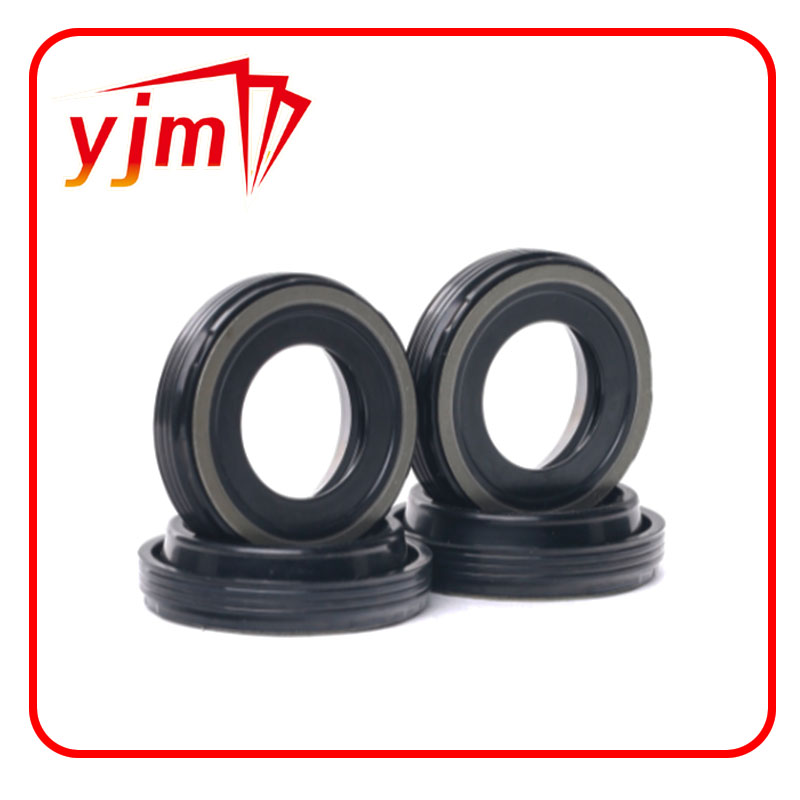valve oil seal
Understanding Valve Oil Seals Importance and Applications
Valve oil seals, often an unsung hero in the world of lubrication and machinery, play a critical role in ensuring the smooth operation of various engines and mechanical systems. These seals are essential components specifically designed to contain lubricant oil while preventing contaminants from entering the engine or machine. This article will explore the functions, types, and applications of valve oil seals, emphasizing their significance in maintaining efficiency and longevity in mechanical systems.
Functions of Valve Oil Seals
The primary function of a valve oil seal is to provide a tight seal between the valve stem and the valve guide, preventing oil from leaking into the combustion chamber while maintaining the necessary lubrication for the valve operation. This lubrication is crucial as it reduces friction between moving parts, thereby minimizing wear and tear. Proper lubrication ensures that the engine operates smoothly and efficiently, ultimately contributing to better performance and fuel economy.
Additionally, valve oil seals help to keep dirt and other contaminants out of the engine, which can lead to serious damage if not properly managed. By providing an effective barrier against dust, mud, and other foreign particles, these seals contribute to the overall health and longevity of the engine components. A failure in the valve oil seal can lead to oil leaks, which not only depletes the engine of necessary lubrication but can also cause catastrophic failures if the engine runs dry.
Types of Valve Oil Seals
There are several types of valve oil seals, each designed for specific applications and conditions. The most common types include
1. Lip Seals These are the most prevalent type of valve oil seals. They feature a flexible sealing lip that compresses against the valve stem to create a tight seal. Lip seals are typically made from rubber or silicone materials, providing excellent oil resistance and durability.
2. O-Ring Seals O-rings are circular seals that fit into grooves around the valve stem. When compressed, they provide a tight seal against fluid leaks. O-rings are commonly used in various automotive and industrial applications due to their ease of installation and effective sealing capabilities.
valve oil seal

3. V-Seals These seals are designed to be flexible and can accommodate substantial axial movement. Their unique design allows them to act as both a dust shield and an oil seal, making them versatile in various environments.
4. Spring-Loaded Seals These seals incorporate a spring mechanism to maintain pressure on the sealing surface, ensuring a tight seal even under varying conditions. They are particularly useful in high-temperature or high-pressure applications.
Applications of Valve Oil Seals
Valve oil seals are widely used across various industries, including automotive, aerospace, and industrial machinery. In the automotive sector, these seals are crucial for the engine's performance, ensuring that oil remains contained while allowing the necessary movement of the valves. They are found in applications such as
- Internal Combustion Engines Here, valve oil seals keep oil from entering the combustion chamber, preventing smoke and excessive emissions while ensuring efficient lubrication of valve components.
- Motorcycles and Small Engines The high-revving nature of these engines necessitates effective sealing solutions to withstand the rigors of operation while maintaining optimal performance.
- Heavy Machinery In industrial applications, valve oil seals help ensure the reliability of hydraulic and pneumatic systems, where fluid containment is essential for operational efficiency.
Conclusion
In summary, valve oil seals are indispensable components of modern machinery and engines, playing a vital role in maintaining operational efficiency and preventing costly repairs. Understanding their functions, types, and applications can help engineers and mechanics choose the right seals for their systems, leading to enhanced performance and prolonged equipment life. As technology continues to advance, the materials and designs of valve oil seals will likely evolve, further improving their effectiveness in keeping engines and machines running smoothly.
-
Simplifying Oil Changes: A Comprehensive Guide to Oil Drain Plugs and Their Variants
News Aug.04,2025
-
Mastering Oil Drain Maintenance: Solutions for Stripped, Worn, and Upgraded Oil Plugs
News Aug.04,2025
-
Fixing Oil Pan Plug Issues: Leaks, Stripped Nuts, and the Right Replacement Solutions
News Aug.04,2025
-
Everything You Need to Know About Oil Drain Plugs: Sizes, Fixes, and Upgrades
News Aug.04,2025
-
Choosing the Right Oil Drain Plug: A Guide to Sizes, Materials, and Drain Innovations
News Aug.04,2025
-
A Complete Guide to Automotive Drain Plugs: Types, Problems, and Innovative Solutions
News Aug.04,2025
-
The Ultimate Guide to Car Repair Kits: Tools and Essentials Every Driver Should Own
News Aug.01,2025
Products categories















